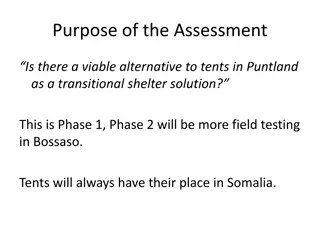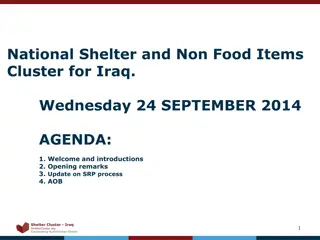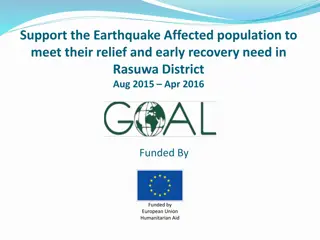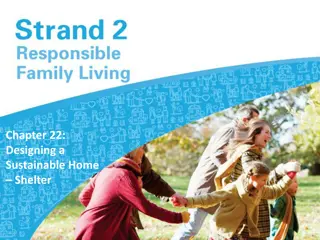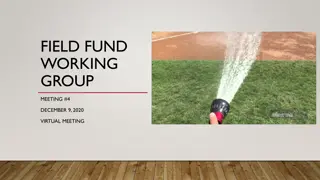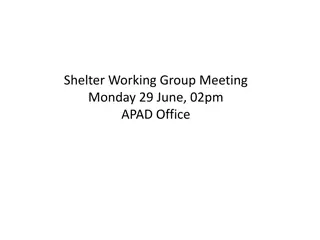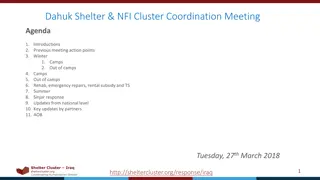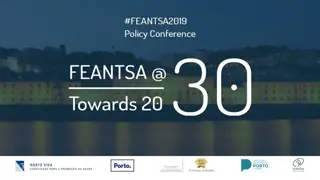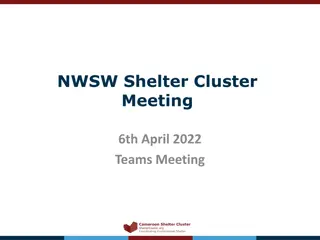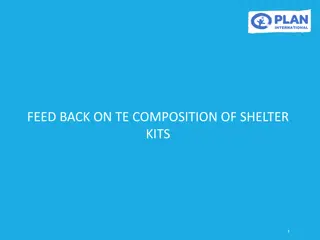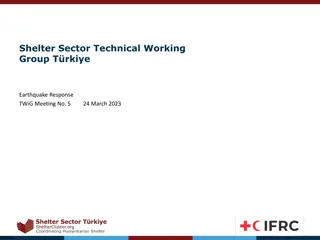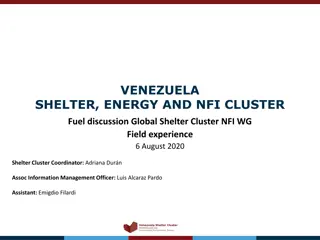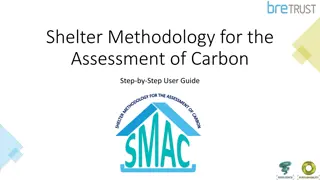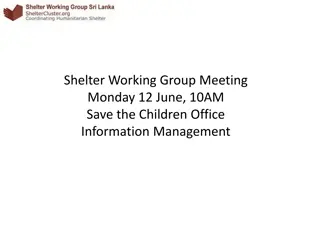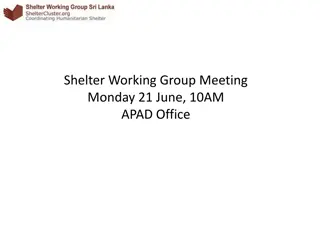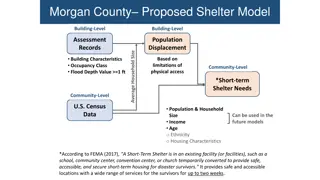Shelter Sector Technical Working Group Meeting Highlights & Resources
Shelter Sector Technical Working Group in Turkey earthquake response discussed topics like light and no-damage buildings, environmental perspectives, and programming support for safer dwellings. The meeting agenda covered introductions, ongoing projects, shading kits, and future plans. Key points emphasized non-structural damage in buildings, debris management, and recycling strategies. Resources for disaster waste management and guidelines were shared for further reference. Contact details for assistance and support were also provided.
Download Presentation

Please find below an Image/Link to download the presentation.
The content on the website is provided AS IS for your information and personal use only. It may not be sold, licensed, or shared on other websites without obtaining consent from the author.If you encounter any issues during the download, it is possible that the publisher has removed the file from their server.
You are allowed to download the files provided on this website for personal or commercial use, subject to the condition that they are used lawfully. All files are the property of their respective owners.
The content on the website is provided AS IS for your information and personal use only. It may not be sold, licensed, or shared on other websites without obtaining consent from the author.
E N D
Presentation Transcript
Shelter Sector Technical Working Group T rkiye Earthquake Response TWiG Meeting No. 6 31 March 2023 Internal
AGENDA 1.0 Introductions 2.0 Light and No Damage Buildings An Environmental Perspective Programming to Support Return to Light and No Damage Dwellings 3.0 4.0 Shading Kits 5.0 Next Weeks Meeting & AOB Internal
Shelter Sector Trkiye Earthquake Response The Environment Five Minutes C. Kelly Disaster and Environment Advisor, WWF/US Global Shelter Cluster Green Team
Light and No Damage Dwellings: An Environment Perspective Key Points Non-structural damage even in no damage buildings Could be a lot of non-structural damage, and debris Reuse, repurpose, recycle Matrix of repair needs and options for reuse or repurpose Identify and plan out recycling due diligence and technical advice https://www.ingv.it/en/newsletter-n-6/giornalisti-per-un-giorno-al-liceo- kant-2
Resources https://www.humanitarianlibrary.org/sites/default/fil es/2023/02/DWMG.pdf https://www.humanitarianlibrary.org/resource/disaster-waste- management-guidelines-0 https://www.alnap.org/system/files/content/resource/ files/main/debrisq46.pdf
Shelter Sector Trkiye Shelter Sector T rkiye Earthquake Response Earthquake Response The Environment Five Minutes C. Kelly Disaster and Environment Advisor, WWF/US Global Shelter Cluster Green Team havedisastercallkelly@gmail.com
3.0 Programming to Support Return to Light and No Damage Buildings Photo Courtesy of Dave Hodgkins Internal
Target Areas and Beneficiaries Ownership Re-assessment of the building Seismic Risk Communication Financial Contribution Transitional Support Level and Arrangement for Technical Assistance for Repairs Internal
Target Areas and Beneficiaries Rural only? Who is target beneficiary _ criteria? Building may be covered by insurance already. o o o Ownership Homeowners only, or rented properties too? o Re-assessment of the building? Need to ensure we do no harm. Beware liability and avoid contradicting government assessment. Beware buildings that are actually structurally damaged (due diligence/do no harm) practical consideration of how this can be done o o o o Seismic Risk Communication psychosocial support _ rebuilding confidence clarity around messaging, eg significance of say a minor crack. o o Internal
Financial Contribution o Voucher or conditional cash grant or in-kind o Cash issued in tranches depending on work completed. o Establish limits for cash grants. Cost varies per house - BoQ o Agreeing financial support bandings/cap. Transitional Support o Temporary accommodation whilst works are carried out. o Support to facilitate people moving from current location to their home. Level and Arrangement for Technical Assistance for Repairs o Government/local authority approval o Training of trades people (in seismic resistant construction principles) o Provision of toolkits? Internal
4.0 Shading Kits Shading can be constructed out of a variety of materials. Protection from UV radiation, preventing dehydration, and overheating Shaded extensions to shelters permits some household functions more space outside. Creating communal shade allows additional space for working and socialising, . Internal
AOB Internal




